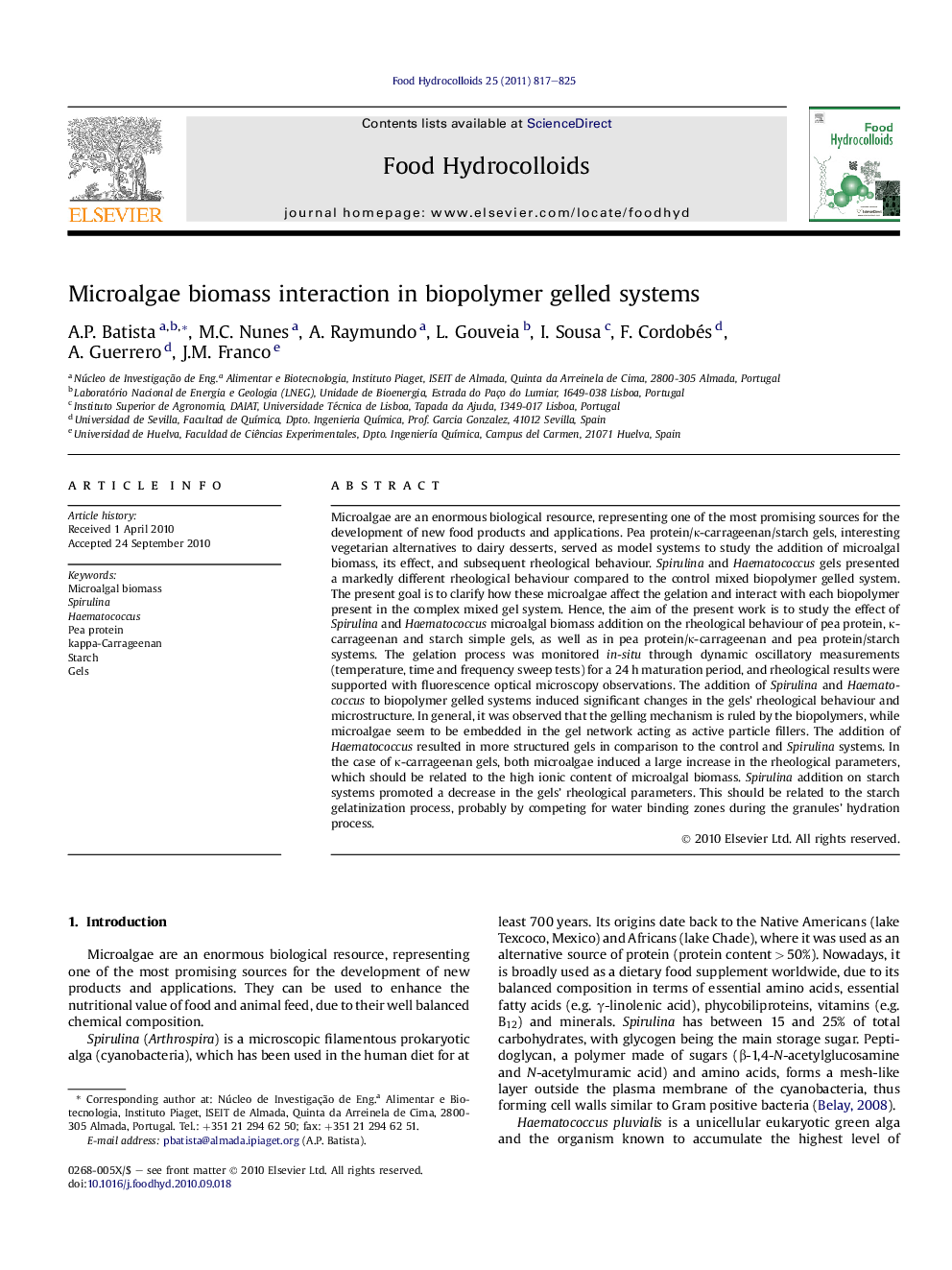| کد مقاله | کد نشریه | سال انتشار | مقاله انگلیسی | نسخه تمام متن |
|---|---|---|---|---|
| 605208 | 880337 | 2011 | 9 صفحه PDF | دانلود رایگان |

Microalgae are an enormous biological resource, representing one of the most promising sources for the development of new food products and applications. Pea protein/κ-carrageenan/starch gels, interesting vegetarian alternatives to dairy desserts, served as model systems to study the addition of microalgal biomass, its effect, and subsequent rheological behaviour. Spirulina and Haematococcus gels presented a markedly different rheological behaviour compared to the control mixed biopolymer gelled system. The present goal is to clarify how these microalgae affect the gelation and interact with each biopolymer present in the complex mixed gel system. Hence, the aim of the present work is to study the effect of Spirulina and Haematococcus microalgal biomass addition on the rheological behaviour of pea protein, κ-carrageenan and starch simple gels, as well as in pea protein/κ-carrageenan and pea protein/starch systems. The gelation process was monitored in-situ through dynamic oscillatory measurements (temperature, time and frequency sweep tests) for a 24 h maturation period, and rheological results were supported with fluorescence optical microscopy observations. The addition of Spirulina and Haematococcus to biopolymer gelled systems induced significant changes in the gels’ rheological behaviour and microstructure. In general, it was observed that the gelling mechanism is ruled by the biopolymers, while microalgae seem to be embedded in the gel network acting as active particle fillers. The addition of Haematococcus resulted in more structured gels in comparison to the control and Spirulina systems. In the case of κ-carrageenan gels, both microalgae induced a large increase in the rheological parameters, which should be related to the high ionic content of microalgal biomass. Spirulina addition on starch systems promoted a decrease in the gels’ rheological parameters. This should be related to the starch gelatinization process, probably by competing for water binding zones during the granules’ hydration process.
Figure optionsDownload as PowerPoint slide
Journal: Food Hydrocolloids - Volume 25, Issue 4, June 2011, Pages 817–825